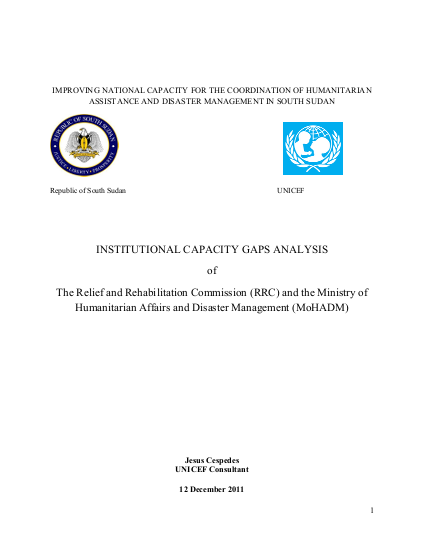
This report attempts to provide a picture to the humanitarian stakeholders working in South Sudan of the main challenges and needs of the government humanitarian institutions, the Relief and Rehabilitation Commission (RRC) and the Ministry of Humanitarian Affairs and Disaster Management (MoHADM). It offers options mapping the way forward on how to improve their capacity to coordinate humanitarian interventions and disaster management. The government of South Sudan is faced with recurring humanitarian needs and the competing fund-raising requests. This report is expected to be a simple tool that can ease efforts to plan capacity building activities and prioritize fund raising attempts. It also aims at facilitating the Humanitarian Country Team (HCT) members and donors’ decision-making process when articulating their support pledges for an improved and more efficient MoHADM and RRC, which will help to reach and direct the aid more effectively to those most in need. In view of the enormous challenges these two government agencies are facing (financial, human, resources, etc.) in March 2011 the Humanitarian Country Team (HCT) agreed on the need to increase its support to RRC and MoHADM1 . The humanitarian partners highlighted three broad steps needed to develop this coordinated approach to engagement and assistance: a) A strategic analysis of government humanitarian ministry functions; b)a Common needs assessment; and c)the development of a common work plan. As a follow up action, UNICEF funded a consultant for a 6 months period tasked to produce, i)a capacity gaps analysis of both institutions, ii)an indicative work plan for the consideration of government, and iii)a funding proposal. The main findings of this Institutional Capacity Gaps Analysis draw attention to three major areas that need to be dealt with: i) an urgent need to clarify the policy framework and organizational set up, roles, and responsibilities between these two government entities responsible for humanitarian assistance; ii) the inadequacy of human resources base, in terms of numbers, as well as the level of knowledge, experience and skills on disaster management and iii) the limited resources available to carry out their tasks.